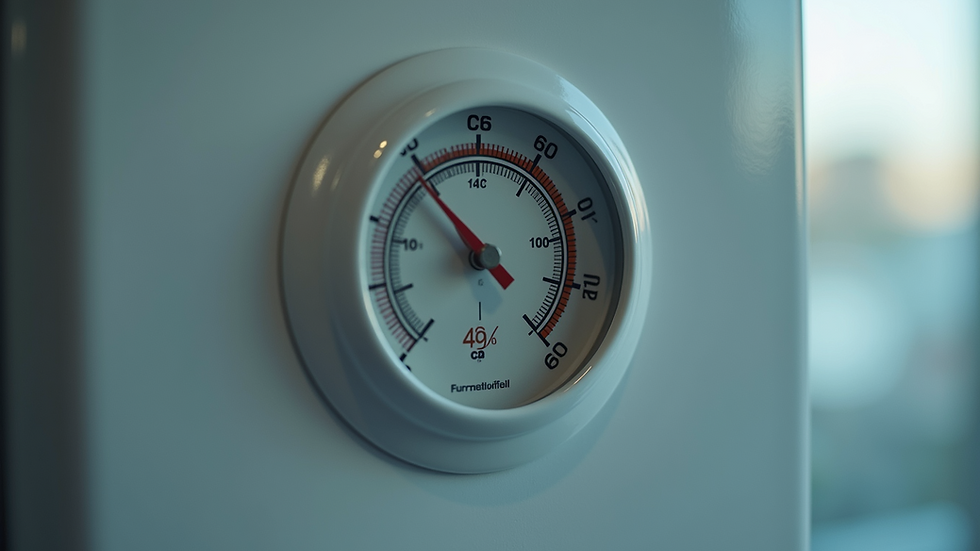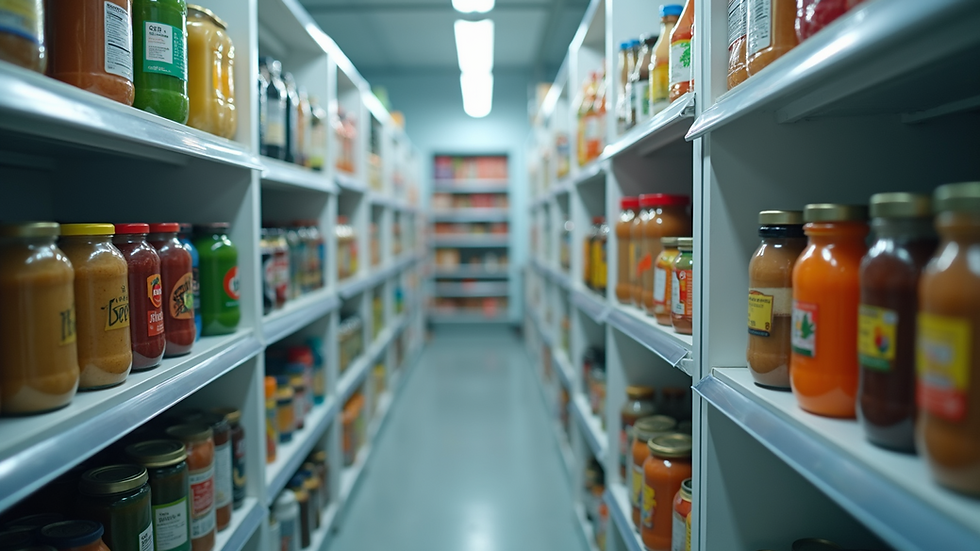Essential Fridge Temperature Tips for Food Freshness and Safety
- Milo Reid
- Jun 10
- 3 min read
Have you ever wondered why the temperature in your refrigerator matters? Maintaining the right fridge temperature is critical for keeping your food fresh and safe. Most people don't realize that a consistent temperature can significantly impact the longevity of their food. Keeping your fridge between 3°C and 4°C (37°F to 40°F) can keep your groceries tasting great and safe from harmful bacteria. Let's dive into essential tips for maintaining your fridge temperature and the benefits of doing so.
The Importance of Fridge Temperature
Food safety is crucial for preventing spoilage and ensuring your health. Bacteria thrive in warmer conditions, making it necessary to maintain your fridge within the optimal temperature range. For example, food can start to spoil if the fridge temperature exceeds 4°C (40°F).
Consider the facts:
Meat: Ground beef can last only 1-2 days at temperatures above 4°C.
Dairy: Milk can spoil faster than you think—I mean, who wants sour milk in their cereal?
Storing food at the appropriate temperature reduces not only spoilage but also the risk of foodborne illnesses.
Ideal Fridge Settings
To keep your fridge operating efficiently, adhere to these temperature guidelines:
Fridge Temperature: Maintain a range of 3°C to 4°C (37°F to 40°F). This keeps most perishable goods fresh longer.
Freezer Temperature: Set your freezer to -18°C (0°F). This preserves food quality and prevents freezer burn, which can ruin the taste of your frozen meals.
Thermometer Use: Invest in a fridge thermometer. This device will provide accurate temperature readings, eliminating uncertainty.

Potential Issues of Improper Temperature
Maintaining the wrong temperature can lead to significant food safety and quality concerns:
Too Warm: If your fridge is warmer than 4°C, food starts to spoil rapidly, resulting in wasted groceries and exposing you to foodborne illnesses. For instance, chicken can become unsafe to eat within hours if stored at inappropriate temperatures.
Too Cold: Setting your fridge too low can freeze items like fruit and vegetables. Ever bitten into a frozen tomato? Not the best experience, right?
Temperature fluctuations can occur when you frequently open the fridge door. Each time you do, the temperature inside can rise. This is another reason to use a thermometer to monitor conditions.
Best Practices for Fridge Organization
Organizing your fridge can greatly help in maintaining a consistent temperature. Here are some recommendations:
Avoid Overcrowding: Overpacking inhibits air circulation, preventing your fridge from cooling efficiently.
Use Clear Containers: Transparent containers make it easy to spot items quickly, reducing the time the door stays open.
Strategic Item Placement: Place frequently used items at the front for quick access, while less-frequently used leftovers can go at the back where it’s typically cooler.
Regular Expiry Date Checks: Clean your fridge regularly and check expiration dates. This simple step keeps spoiled items out and makes more room for fresh groceries.

Signs Your Fridge Is Not Working Properly
Recognizing the signs of a malfunctioning fridge can save you from food safety issues:
Unusual Smells: If bad odors linger, it may indicate spoiled food or trouble with air circulation.
Frequent Ice Build-up: If you see ice forming in unexpected areas, it could mean the temperature is too low, affecting food quality.
Thermometer Readings: If your thermometer shows temperatures frequently outside the ideal range, it’s time to investigate.
Inconsistent Cooling: If parts of your fridge are colder than others, it may be worth reorganizing or calling for appliance maintenance.
Taking Charge of Your Food Safety
Your refrigerator is vital for ensuring food stays safe and fresh. By keeping it between 3°C and 4°C (37°F and 40°F), you significantly enhance the quality of your food, reducing bacteria growth.
Implementing simple strategies, such as using a thermometer and organizing your fridge, can lead to better food preservation and safety. By prioritizing these practices, you not only get the most out of your groceries but also contribute to healthier meals and reduced food waste.
Now, take a moment to check your fridge settings! Keeping your food fresh and safe is just a thermometer away! #FridgeFacts #ApplianceTips #StayFresh



Comments